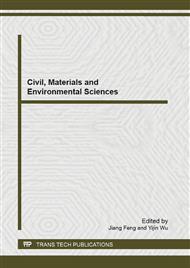p.346
p.351
p.355
p.359
p.363
p.367
p.371
p.379
p.384
Regulation of the Absorption of Cu with Various of Pollutants in Sediment through Fractional Factorial Design
Abstract:
The resolution IV fractional factorial design was used to study the adsorption regularity of Cu coexisted with various pollutions (Zn, Pb, Cd, Ni, atrazine, malathine, et al.) onto the sediment. The study found that the main effect and the second-order interaction effect of ten pollutions concentration had significant influence on the adsorption of Cu on the sediment. The concentration of Cu was the critical factor to the promotion of the absorption capacity of Cu in sediment, the second-order effect played the critical role in restraining the absorption of Cu. The main effect of Cd, and the second-order interaction effect include Cd, had greatly inhibited the absorption of Cu in sediment, and the contribution was over 30%, which meant there was prominent antagonism between Cu and Cd. Fractional factorial design can provide a theoretical basis for the reveal of the adsorption mechanism between the different contaminants in the water environment pollution.
Info:
Periodical:
Pages:
363-366
Citation:
Online since:
August 2013
Authors:
Price:
Сopyright:
© 2013 Trans Tech Publications Ltd. All Rights Reserved
Share:
Citation:


